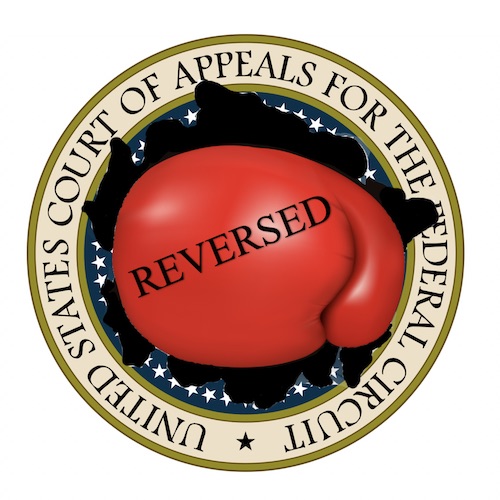“It is not disputed that no agreement was reached. My colleagues’ finding that settlement was reached on CNC’s terms that were rejected by PlasmaCAM, is contrary to fundamental contract law. – Judge Newman, dissenting
 On February 3, the U.S. Court of Appeals for the Federal Circuit (CAFC) reversed and remanded a decision by the U.S. District Court for the Eastern District of Texas granting a motion to enforce PlasmaCAM’s (Plasmacam) version of an agreement with Fourhills Designs, LLC, and Thomas and Martha Caudle (collectively “CNC”). On appeal, the CAFC held that CNC’s version of the agreement more accurately reflected the understanding between the two parties regarding a settlement over Plasmacam’s claim that CNC infringed U.S. Patent No. 7,071,441 (‘441 patent), for which Plasmacam has an exclusive license.
On February 3, the U.S. Court of Appeals for the Federal Circuit (CAFC) reversed and remanded a decision by the U.S. District Court for the Eastern District of Texas granting a motion to enforce PlasmaCAM’s (Plasmacam) version of an agreement with Fourhills Designs, LLC, and Thomas and Martha Caudle (collectively “CNC”). On appeal, the CAFC held that CNC’s version of the agreement more accurately reflected the understanding between the two parties regarding a settlement over Plasmacam’s claim that CNC infringed U.S. Patent No. 7,071,441 (‘441 patent), for which Plasmacam has an exclusive license.
A Disputed Settlement
In January 2019, Plasmacam sued CNC in district court for infringing the ‘441 patent, which claims a plasma cutting system. CNC and Plasmacam eventually agreed to a settlement, which was reflected in an exchange of emails that the court cited. The district court was notified that the parties settled the case and ordered submission of the closing paperwork by January 23, 2020. During this period before final submission, the specific terms of the settlement agreement were discussed, and the parties disagreed as to the terms of the mutual release and as to what products would be covered by the covenant not to sue.
Plasmacam argued for separate release obligations for it and CNC, asking CNC to release Plasmacam from any causes of action that were a result of or related to the lawsuit, while Plasmacam would release CNC from only past and future claims for infringement of the ‘441 patent arising from the Covered Products. Alternatively, CNC proposed a broader release which applied equally to each party. CNC desired a release to all past claims of any nature and seemed to want to cover claims that were not associated with the ‘441 patent.
Plasmacam and CNC proposed different definitions for “Covered Products”. Plasmacam suggested Covered Products be defined as “the components currently manufactured, sold or offered for sale by CNC which incorporate digital height control.” On January 7, 2020, CNC replied with a draft that defined Covered Products as “all past, present, and future components manufactured, sold, or offered for sale by CNC which incorporate digital torch height control.” Plasmacam replied shortly thereafter on January 15, proposing limiting Covered Products to “components previously or currently manufactured, sold or offered for sale by CNC which incorporate digital torch heigh control.”
CNC quickly objected to Plasmacam’s new proposal on January 17, stating that “products are very frequently revised or updated” meaning the limited definition by Plasmacam “would be practically meaningless.” Plasmacam agreed to an additional compromise to address CNC’s concern regarding routine updates and bug fixes and proposed Covered Products be defined as “(1) all components previously or currently manufactured, sold or offered for sale by CNC which incorporate digital torch height control; and (2) updates and bug fixes to the currently manufactured products.” CNC rejected Plasmacam’s compromise and suggested Cover Products be “all components manufactured, sold or offered for sale by CNC which incorporate digital torch height control.” On January 21, Plasmacam stated that they agreed to CNC’s definition of Covered Products.
Plasmacam and CNC continued to argue over the terms of the mutual release and informed the district court as much. In response, the district court authorized each side to brief separate motions to implement their respective understandings of the settlement agreement. In the course of briefing, Plasmacam and CNC reached an agreement regarding the mutual release. The parties agreed that the mutual release should apply to claims that “were brought or should have been brought, arising out of or relating to the Litigation.”
CNC’s brief referenced the January 21 agreement pertaining to the agreed upon definition of Covered Products. However, Plasmacam’s reply brief departed from the parties’ January agreement in their definition of Covered Products. In a status conference set by the district court on June 5, CNC did not raise this issue. The district court granted Plasmacam’s motion to enforce the settlement agreement and Plasmacam’s version of the agreement was adopted without addressing the January 21 agreement regarding the definition of Covered Products.
CNC filed a timely motion for reconsideration urging that Plasmacam’s definition was not what the parties agreed to previously. Plasmacam filed a competing motion claiming that the parties never reached an agreement because “that compromise was in exchange for the request that [CNC] compromise on the release paragraph.” The district court denied CNC’s motion and CNC appealed to the Federal Circuit.
Jurisdictional Reasoning
The CAFC began by addressing their jurisdiction to the case. Both parties agreed that the court had jurisdiction, but disagreed on whether it arose from 28 U.S.C. §1292(a)(1) or 28 U.S.C. §1295(a)(1). The court concluded that the district court order to perform the settlement agreement constituted either an appealable injunction or a final judgment.
The CAFC determined that Section 1292(a)(1) applies to orders which required specific performance. By requiring CNC to execute the settlement agreement, the district court’s order effectively mandated specific performance. The court also determined it has jurisdiction over the order because it was a final judgment. Section 1295(a)(1) confers jurisdiction to the Federal Circuit over appeals from a final decision of district courts. Neither party contemplated further proceedings and the district court’s enforcement of the settlement agreement makes clear the court’s intent to end the case.
Interpretation of the Settlement Agreement
CNC contended that the district court erred in their enforcement of the settlement agreement between the two parties because enforcement improperly limited the scope of Covered Products. The CAFC concluded that whether parties mutually agreed to contract terms is a factual question reviewed for clear error.
The court found that the district court committed clear error in its limitation of Covered Products because the record established that Plasmacam agreed to CNC’s proposed definition for Covered Products on January 21. The sole basis that the district court relied on for disregarding this agreement was that Plasmacam gave CNC the Covered Products language in exchange for other proposed changes to the mutual release, however the CAFC found no support for any such qualification of the agreement.
The CAFC continued in its support of this interpretation:
Nothing in Plasmacam’s January 21 acceptance email made its assent to the Covered Products term contingent on adopting Plasmacam’s version of the mutual release. At the June hearing on the parties’ competing motions to enforce the settlement agreement, Plasmacam told the district court that the parties were “on the same page” regarding the agreement, and CNC confirmed that an agreement on the mutual release meant the parties did “not have an issue.”
The court thus concluded that the district court committed clear error and remanded for entry of the appropriate order.
Judge Newman’s Dissent
In her dissent, Judge Pauline Newman claimed that there was no “January agreement” because “no final understanding was reached,” and there had been “no meeting of the minds, and no signed agreement.” Judge Newman found that both sides and the district court agreed that there was no such agreement. The “January agreement” was a unique creation of the panel majority, said Newman.
Newman noted that contract formation requires mutuality and, during the course of drafting the settlement proposal, both sides continually revised the other’s draft agreement until they informed the district court that they had reached an impasse. These continued revisions show that no mutual contract formation occurred, and the district court correctly dealt with this “January agreement.” Newman added:
PlasmaCAM and CNC recognized the need for an executed settlement agreement, and they pursued negotiations to that end. It is not disputed that no agreement was reached. My colleagues’ finding that settlement was reached on CNC’s terms that were rejected by PlasmaCAM, is contrary to fundamental contract law.
Image Source: Deposit Photos
Author: almoond
Image ID: 10042948

![[IPWatchdog Logo]](https://ipwatchdog.com/wp-content/themes/IPWatchdog%20-%202023/assets/images/temp/logo-small@2x.png)

![[Advertisement]](https://ipwatchdog.com/wp-content/uploads/2024/04/Patent-Litigation-Masters-2024-sidebar-early-bird-ends-Apr-21-last-chance-700x500-1.jpg)

![[Advertisement]](https://ipwatchdog.com/wp-content/uploads/2021/12/WEBINAR-336-x-280-px.png)
![[Advertisement]](https://ipwatchdog.com/wp-content/uploads/2021/12/2021-Patent-Practice-on-Demand-recorded-Feb-2021-336-x-280.jpg)
![[Advertisement]](https://ipwatchdog.com/wp-content/uploads/2021/12/Ad-4-The-Invent-Patent-System™.png)







Join the Discussion
One comment so far.
B
February 7, 2022 11:00 amLeave it to Judge Newman to state the obvious flaws of Dyk’s “contracts for idiots” analysis.